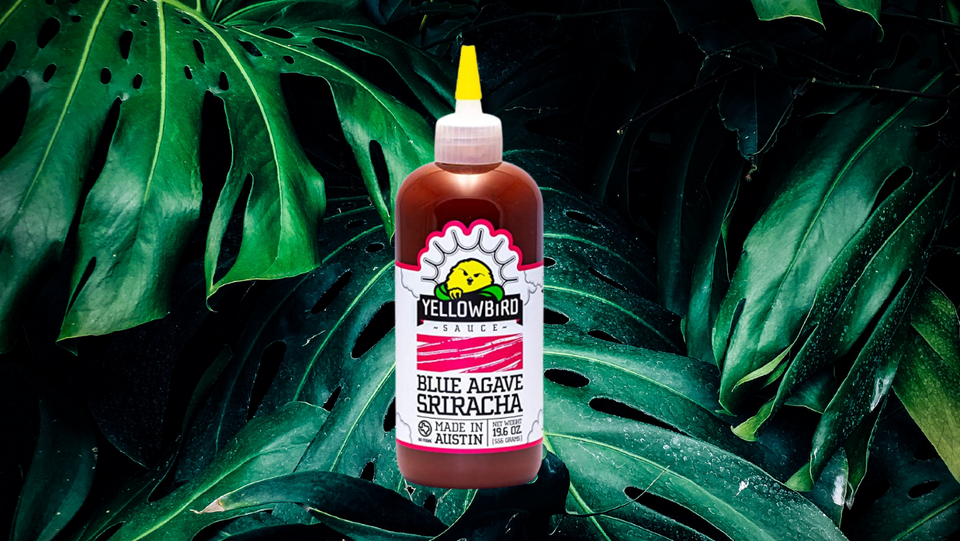
Hardly anything about the food industry has been typical, expected or even recognizable during the age of COVID-19. That said, 2021 did give us a number of innovations in food that were both inspired by the pandemic and that managed to flourish in spite of it.
As this strange, exciting, frustrating and hopeful year comes to an end, HuffPost celebrates the trends that defined the food landscape in 2021 and looks ahead to 2022 and beyond.
1. Plant-based cuisine became even more popular this year.
The presence of plant-based food wasn’t new in 2021. This “trend” has been on the rise for several years now, and it shows no signs of vanishing. However, chefs and food entrepreneurs saw a greater demand for dishes and groceries with no animal products. “The plant-based [protein] trend is probably the biggest trend I can point to that hits across our diverse populations in the U.S.,” said Celine Beitchman, director of nutrition at the Institute of Culinary Education. “There are trends that hit some groups and not others, but plant-based food that mimics meat at the level that we’re seeing at grocery stores and at fast food outlets is a big shift toward eating plant-based for the average person. I expect that to continue to grow.”
Shaun Quade, the founder of Grounded Foods, also views plant-based eating as a movement that’s here to say, telling HuffPost that “the monumental shift toward plant-based food isn’t even a trend ― it’s just the way forward at this point. I don’t expect people to convert to veganism any time soon (I mean, I haven’t), but since the pandemic began, a lot of us are rethinking our diets and the role our food plays in sustainability and personal health. Plant-based dining has gone from being a niche to something that’s being adopted by major retailers through to fine dining institutions like Eleven Madison Park.”
2. Supply-chain issues and product shortages inspired chefs to get creative.
Efforts to move past shutdowns and toward something resembling “normal” life came with a number of difficulties, including supply-chain snags and a dearth of kitchen staples. From a chef’s perspective, these shortages and long waits could have proven catastrophic, but enterprising gourmands instead decided to work with what they had.
“Supply-chain shortages have pushed chefs to be more creative in finding alternatives in their offerings,” said Jordan Harvey, executive chef of Hearth & Hill in Park City, Utah. “For us, the biggest example is seafood. In an effort to maintain our approachable prices, we have had to change some menu items when sourcing the dishes’ original ingredients proved tricky. For example, prices for snapper and ahi tuna fluctuated throughout the summer. Because of this, we had to sub in alternative seafood options for our popular red snapper dish and tuna poke bowl.”
James Beard Award nominee and restaurateur Ouita Michel of Holly Hill & Co. in Kentucky believes that the supply-chain snafus of 2021 heralded a rise in locally sourced produce. “Global supply chains may have faltered, but the local farmer and home gardener did not!” Michel said. “I saw more people freezing, canning, dehydrating and plain-old munching on the bounty from their own gardens, no matter how small. Our philosophy, more this year than ever before, comes from Mary Berry at The Berry Center: ‘Cook what the farmer can grow!’ For me, nothing is more fun or rewarding than that.”
3. Sustainability played a major role in menu development.
Concerns for the environment and an interest in lowering waste, along with supply-chain factors, prompted a push for sustainable practices in kitchens, both in restaurants and at home. Peter Merriman, the chef and owner of Merriman’s Hawaii, explained that many restaurants had to “curate menus that steer away from high-emission production, such as dairy and meat (which contribute to a large amount of the world’s greenhouse gases).”
Executive chef Patricia Delgado of Vibrant in Houston applied many sustainable practices in her own kitchen in 2021, like “zero waste” and composting.
“It was impactful in our restaurant because we were able to see our progress every week and month, and that kept us accountable for how we produced in the kitchen,” Delgado said. “Zero waste opens your creativity and keeps you on your toes on how to create valuable byproducts, like a delicious chili sauce with leftover veggies and a galette dough from almond cashew house milk pulp.”
She sees enormous potential for sustainability to maintain a serious influence in the food world. “I do hope that the zero-waste and compost trends continue, because those are the actions that we need to take to create awareness and to educate our future chefs and leaders to help our planet.”
4. Comfort food and heritage cooking brought warmth and familiarity to a challenging year.
In 2021, many diners found themselves venturing out to restaurants and bars after months at home, but they weren’t searching for molecular gastronomy or other experimental types of haute cuisine. Instead, they gravitated toward menus packed with comforting dishes. “The biggest food trend I saw was chefs going back to their roots and cooking the food they grew up with,” said Sedesh Boodram, culinary director at The Anvil Pub & Grill in Birmingham, Alabama. “Comfort food was big because people wanted to feel safe. Everyone tapped into their childhoods and prepared dishes that had memories connected to them, like s’mores and fun cereal desserts. I also saw trends going away from high-touch plates to more simple and clean dishes.”
The yearning for nostalgia and tried-and-true favorites also held for beverage lists at restaurants and bars. “Manhattans, Old-Fashioneds and cosmos ― all the classic drinks that your family members enjoyed, and that we enjoyed in 2021,” said Stephen Blevins, wine director of Fleming’s Prime Steakhouse & Wine Bar. “There’s an experiential aspect of drinking that brings back memories, whether it’s a comforting drink or a familiar favorite from a holiday.”

5. TikTok gave amateur and pro chefs an opportunity to show off their skills.
Social media has been an invaluable tool for keeping people connected during the pandemic, and 2021 saw the rise of TikTok as a powerful force in the food world. “TikTok as a whole has been the most fun food trend of 2021 because we are seeing very inventive ways to prepare and eat foods going viral because of it,” said Jason Rosenbaum, the founder of Actual Veggies.
TikTok also provided chefs with a chance to educate homebound cooks and to inspire amateurs to try new recipes and techniques in their own kitchens, according to chef and kitchen manager DuVal Warner of Ranch 45 in Solana Beach, California.
“The accessibility of restaurant food may have been limited in 2021, but the availability of virtual food education was booming via a multitude of social media platforms,” Warner said. “While some individuals may have felt that it was unsafe to walk through the doors of their favorite restaurants, chefs and self-taught TikTok instructors brought the culinary commentary to hungry and captive audiences. Food fans were able to view and create our own versions of food and food art. It was a game-changer.”
6. Pop-ups gave chefs and diners the chance to experiment.
The tough economic factors of 2020 remained a challenge for chefs and restaurateurs in 2021. In lieu of opening full-fledged restaurants, some clever food world figures decided to open pop-up venues that allowed them to play around with new flavors and cuisines and to share their creativity with the public. Restaurateur Max Sussman, who co-owns Samesa in New York City and Bog & Thunder Culinary Tours, views the proliferation of pop-ups (especially outdoor pop-ups) as “the most fun trend of the pandemic. It fills so many of the needs people have right now. Chefs are seeking safe and exciting places to cook without jumping into a major commitment. And people are seeking ways to gather in groups in a safe way amidst continuing COVID anxiety around variants and breakthrough cases.”
Chef Tara Monsod of Animae in San Diego thinks pop-ups will stick around throughout 2022 and long after that. “Pop-up events are the closest thing we have to street food,” Monsod said. “It’s an intimate and unique dining experience that you normally wouldn’t get from a typical restaurant. It feels more exclusive and experimental. The fact is, people aren’t going back into the restaurant industry. Chefs and cooks are setting out on their own to trailblaze this category of dining.”
7. Takeout and food delivery were instrumental to the 2021 dining scene.
Shutdowns and dining room closures turned takeout and delivery services into pandemic necessities, and 2021 saw further growth in that side of the food industry, with chefs like Alejandro Bonilla of Tiny’s in New York City finding ways to shift the typical takeout and delivery model to suit their visions.
“Creativity in home delivery was the most fun challenge for us chefs as we [pushed ourselves] to think of how to give the same quality food to our client base,” Bonilla said. “The opportunity to be creative with menus, fresh local ingredients, packaging and logistics to bring fresh, succulent delicacies to people’s homes [taught us] to think outside the box in order to provide dishes to people who weren’t able to access our food when the restaurant was shut down. We created ways to continue serving with care; we love to deliver the best experience to our guests, and there is nothing more fun and joyful that seeing the smiles of satisfaction from our guests throughout the pandemic.”
8. Diners showed their confidence in chefs by opting for chef’s-choice menus.
Getting back to on-site dining at restaurants was a thrill for food enthusiasts in 2021, and while many restaurant guests opted for familiar favorites at their beloved haunts, others chose to put their gastronomic fates in the hands of talented chefs. “There’s been a surge in whole-hearted trust in restaurant staff to provide a great dining experience by letting them choose [the guest’s] meal. Guests want to have unforgettable experiences that take them for a ride and surprise them,” said Shannon Kennedy, head sushi chef of Uchi in Austin, Texas.
9. Casual and ‘fast casual’ concepts were a huge hit.
While fine dining wasn’t altogether absent from the food landscape in 2021, the restaurateurs and chefs HuffPost spoke to largely agreed that more relaxed and casual environments appealed to diners in a compelling way.
“The restaurant industry is getting more casual, and I definitely see that continuing over the next five years,” said Ryan Pera, executive chef of Coltivare in Houston. “This means we’ll see more elevated concepts from fast-casual restaurants without changing the service aspect, along with great food in a more casual setting.”
Executive chef Will Fincher of The Longboard in Sullivan’s Island, South Carolina, also thinks that “the biggest trend in 2021 was a shift toward more family-style eating and casual dining. With travel restrictions and health scares, many families are looking for a more casual and ‘homey’ experience when they do get together. People are at home more often now and really want to enjoy their time when they do go out to eat. But also, they are looking for some value for their money and the ability to try a lot of things.”
